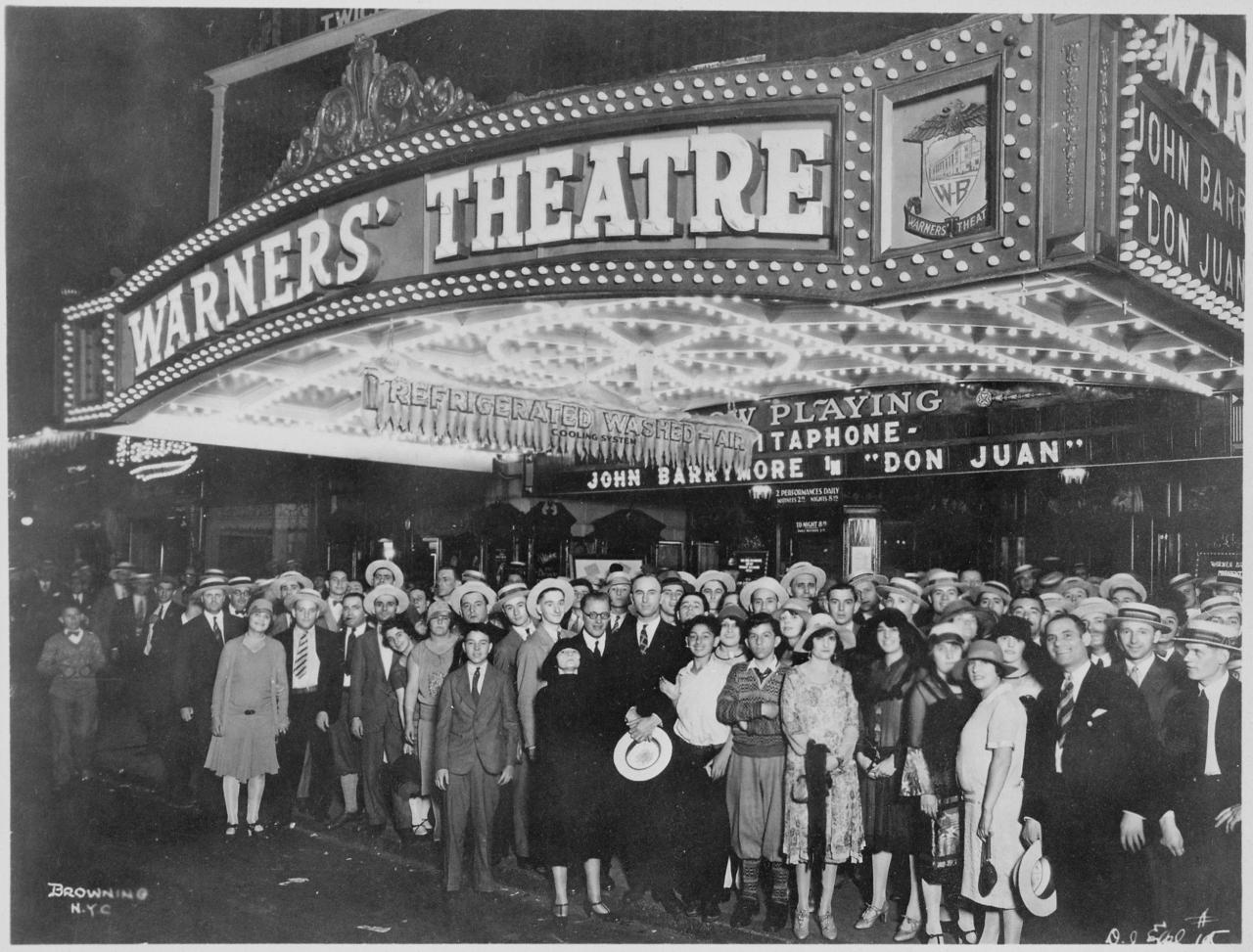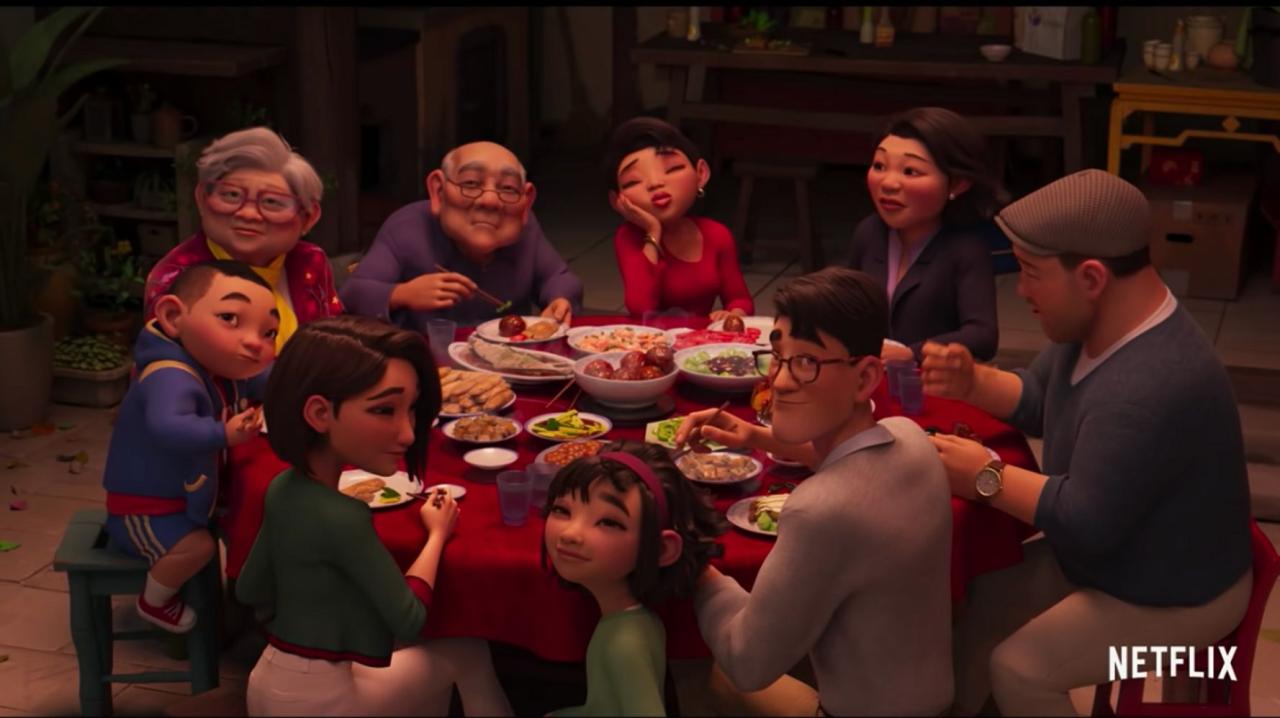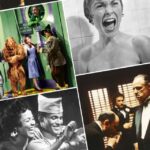How 21+ Movies Reflect American Culture explores the fascinating interplay between cinema and society. This examination delves into the genres, character archetypes, themes, and technological influences shaping the portrayal of American culture in films rated for mature audiences. We’ll analyze how these films reflect societal anxieties, desires, and evolving values, considering the impact of censorship, economic factors, and diverse representation.
From the gritty realism of crime dramas to the escapism of romantic comedies, mature-rated films offer a unique lens through which to understand the complexities of American identity and its transformations across different eras. This analysis will uncover how cinematic techniques, musical scores, and visual styles contribute to the overall cultural commentary presented in these films, revealing both progress and persistent challenges in societal representation.
Genre Representation
The landscape of 21+ films offers a rich tapestry of genres, each reflecting and shaping American cultural anxieties, desires, and evolving societal norms. Analyzing these genres provides valuable insight into the nation’s collective consciousness at different points in time. The prevalence of specific genres and their thematic content directly correlate with the dominant social and political climates.
The most prevalent genres in 21+ movies consistently include action, romantic comedy, thriller, and drama, though their specific manifestations and cultural interpretations shift over time. Action films, for example, often reflect anxieties surrounding national security and international relations, while romantic comedies often mirror changing societal expectations regarding relationships and gender roles. Thrillers frequently tap into societal fears of the unknown, whether it be crime, political corruption, or technological advancements. Dramas, with their exploration of complex human relationships and moral dilemmas, serve as a mirror to the ethical and social challenges of the era.
Violence in Action Films Across Decades
The portrayal of violence in action films has undergone a significant evolution, mirroring shifts in cultural attitudes towards aggression and its consequences. Early action films, particularly those from the 1970s and 80s, often featured a more stylized and less graphic depiction of violence, frequently emphasizing martial arts or gunplay with a focus on spectacle over realism. This approach reflected a societal tolerance for a certain level of onscreen violence, often presented within a context of clear-cut morality, with heroes definitively triumphing over villains. However, by the 1990s and beyond, action films increasingly incorporated more graphic and realistic depictions of violence, reflecting a growing societal awareness of its impact and a more complex exploration of morality in gray areas. This shift also coincided with advances in filmmaking technology allowing for more visceral portrayals. Films like “Die Hard” (1988) and “The Matrix” (1999) exemplify this transition, showing the evolution from stylized to increasingly realistic violence. The increased graphic nature of violence in later films might be attributed to a growing desensitization in some segments of the population, or alternatively, a more critical examination of the consequences of violence in society.
Romantic Comedies and Evolving Relationships
Romantic comedies in 21+ films provide a fascinating lens through which to examine the evolution of relationships and societal expectations. Early romantic comedies often presented idealized, often unrealistic, portrayals of courtship and marriage, with a heavy emphasis on traditional gender roles and happily-ever-after endings. More contemporary romantic comedies, however, frequently explore more complex and nuanced relationships, tackling issues such as infidelity, career ambitions, and the challenges of balancing personal and professional life. The shift reflects a societal move away from rigid gender roles and a greater acceptance of diverse relationship structures. For example, the evolution from films like “When Harry Met Sally…” (1989) to “Crazy Rich Asians” (2018) illustrates a growing representation of diverse characters and relationship dynamics, reflecting a broader cultural shift towards inclusivity and acceptance of diverse relationships. The shift reflects a growing understanding and acceptance of complex relationship dynamics in modern society, moving beyond the simplistic narratives of earlier decades.
Character Archetypes
Character archetypes in 21+ films often serve as shorthand for exploring complex themes within American culture. These recurring figures, while fictional, reflect societal values, anxieties, and aspirations, providing a lens through which to examine evolving cultural norms and beliefs. The consistent presence of certain archetypes across various genres reveals their enduring cultural resonance.
The prevalence of specific archetypes highlights both the stability and the shifts within American cultural narratives. By analyzing these recurring figures, we can gain insight into the societal preoccupations and evolving understanding of identity and relationships reflected in the movies themselves.
Recurring Character Archetypes and Their Cultural Significance
The “femme fatale,” for instance, a recurring figure in film noir and thrillers, embodies both fascination and fear surrounding female sexuality and power. Her allure and manipulative nature often reflect societal anxieties about female agency and the potential disruption of established patriarchal structures. Conversely, the “everyman” or “anti-hero” archetype, prevalent in various genres, reflects a yearning for relatable characters who grapple with moral ambiguities and societal pressures, often showcasing the struggles of the average person navigating a complex world. The “rebellious youth” archetype, frequently seen in coming-of-age stories, embodies the generational tension and the search for identity that often defines adolescence. Their defiance against authority figures can represent a broader cultural push for change or a rejection of established norms.
Female Character Portrayals Across Genres
The portrayal of female characters has significantly evolved over time, reflecting changing societal attitudes towards gender roles and expectations. The following table illustrates some of these shifts across different genres:
| Genre | Early Portrayal (pre-1970s) | Contemporary Portrayal (post-2000s) | Notable Changes |
|---|---|---|---|
| Romantic Comedy | Often depicted as damsels in distress or solely defined by their romantic relationships. | More likely to be independent, career-oriented, and complex individuals with flaws and ambitions beyond romance. | Increased agency, diverse representations of body type and personality. |
| Action/Thriller | Typically relegated to supporting roles, often damsels in distress needing rescue. | Increasingly portrayed as strong, capable protagonists or equally matched partners to male leads. | Greater focus on physical and mental strength, leading roles for women. |
| Drama | Frequently depicted as victims or defined by their relationship to male characters. | More nuanced and complex portrayals exploring diverse experiences and internal conflicts. | Greater exploration of female psychology, increased focus on internal struggles and agency. |
Villainous Characters as Reflections of Societal Fears
Villainous characters often serve as projections of societal anxieties and fears. For example, the rise of “corporate villains” in recent years reflects anxieties surrounding unchecked corporate power and its impact on individuals and the environment. These characters often embody greed, disregard for ethical considerations, and a willingness to exploit others for profit. Similarly, the portrayal of terrorists or extremist groups in action films often reflects societal fears related to national security and global instability. These villains represent external threats that challenge the established order and provoke anxieties about safety and control. The depiction of these villains, however, should always be approached critically, acknowledging the potential for harmful stereotypes and generalizations.
Themes and Motifs
American 21+ films often serve as a cultural mirror, reflecting societal anxieties and aspirations through recurring themes and motifs. These elements, woven into narratives, provide insightful commentary on evolving American values, beliefs, and social structures. Examining these recurring patterns reveals deeper understandings of the cultural landscape depicted on screen.
The exploration of sexuality, power dynamics, and identity consistently features prominently in films intended for mature audiences. Sexuality, frequently depicted with varying degrees of explicitness, reflects shifting societal attitudes towards intimacy, relationships, and gender roles. The portrayal of power, often linked to themes of wealth, status, and social influence, showcases the ongoing struggle for control and dominance within American society. Identity, encompassing gender, race, class, and sexuality, is explored through character arcs that often grapple with self-discovery and societal expectations. These themes are frequently interwoven, creating complex narratives that resonate with viewers on multiple levels.
Sexuality and Its Cultural Context in 21+ Films
The depiction of sexuality in R-rated films has evolved significantly over time, mirroring changes in societal norms and attitudes. Early examples might feature veiled allusions to sexual activity, while more contemporary films may present explicit portrayals, reflecting a growing openness in discussions around sex. This evolution can be seen by comparing films like “The Graduate” (1967), which hinted at sexual tension and transgression, to more recent films with more overt depictions of sexuality. The cultural context influences not only the level of explicitness but also the narratives surrounding sexual encounters, exploring themes of consent, desire, power imbalances, and the complexities of human relationships. The evolving depiction of LGBTQ+ relationships also reflects broader social changes and the ongoing fight for equality and representation.
Power Dynamics and Social Structures
Many 21+ films utilize narrative structures to explore power dynamics and social hierarchies. Crime dramas, for example, often depict the struggle for power between rival gangs or individuals vying for control within a criminal underworld. Similarly, thrillers and suspense films may explore the power imbalances between victims and perpetrators, highlighting themes of vulnerability and exploitation. The portrayal of corporate power and its influence on individuals and communities is also a common theme. Films like “Wall Street” (1987) and “The Wolf of Wall Street” (2013) offer cautionary tales about unchecked ambition and the corrupting influence of wealth and power. These narratives serve as cultural commentaries, reflecting anxieties about social inequality and the potential for abuse of power.
Identity and Self-Discovery in Mature Films
The exploration of identity is central to many 21+ films. Characters often grapple with questions of self-worth, belonging, and societal expectations. These narratives may involve coming-of-age stories, explorations of racial or ethnic identity, or the challenges faced by individuals who defy societal norms. Films often use specific motifs, such as clothing, music, and settings, to visually communicate aspects of a character’s identity and their journey of self-discovery. The use of symbolic imagery contributes to the overall thematic resonance, allowing for deeper engagement with the characters’ struggles and triumphs.
Social Class and Economic Disparity in Film
The portrayal of social class and economic disparity in 21+ films provides a lens through which to examine American society’s persistent inequalities. Many films depict the struggles of working-class characters navigating systemic disadvantages, contrasting their lives with those of the wealthy elite. This contrast often highlights the widening gap between social classes and the limited opportunities available to those from disadvantaged backgrounds.
Films Exploring Social Class and Economic Disparity, How 21+ Movies Reflect American Culture
Several films effectively illustrate the impact of social class and economic disparity on individuals and communities. “Parasite” (2019), a South Korean film with significant global impact, offers a darkly comedic yet poignant portrayal of class conflict and the desperation of those living in poverty. “American Beauty” (1999) examines the disillusionment and emptiness found in suburban affluence, contrasting it with the struggles of those living on the fringes of society. “Manchester by the Sea” (2016) explores themes of grief, loss, and the challenges of working-class life in a poignant and realistic manner. These films, among many others, contribute to cultural conversations about economic inequality and its far-reaching consequences. They serve as reminders of the disparities that exist within society and encourage reflection on the systems that perpetuate them.
Technological Influence
Technological advancements have profoundly shaped the portrayal of American culture in 21+ movies, influencing not only the narratives themselves but also the very way audiences experience and interpret them. From groundbreaking special effects to innovative cinematic techniques, technology has continuously redefined the boundaries of storytelling, reflecting and shaping societal values, anxieties, and aspirations.
The impact of technology is multifaceted, extending from the simple to the complex. Early advancements in sound recording and color film fundamentally altered the emotional landscape of movies, allowing for a richer, more immersive experience. Later innovations like CGI and sophisticated visual effects enabled the creation of fantastical worlds and heightened realism, dramatically expanding the range of stories that could be told. These technological leaps have mirrored and influenced cultural shifts, reflecting both our fascination with technological progress and our apprehension about its potential consequences.
Special Effects and the Evolution of Genre
The evolution of special effects provides a clear illustration of technology’s influence. Early science fiction films, constrained by technological limitations, often relied on creative camera angles and miniature sets to create a sense of wonder. Consider the classic “War of the Worlds” (1953), where the Martian invasion was depicted through inventive, albeit rudimentary, special effects. This contrasted sharply with later films like “Avatar” (2009), where photorealistic CGI created a fully realized alien world, significantly impacting the audience’s engagement and perception of the narrative. This evolution reflects a broader societal shift, from a more cautious apprehension about technological advancement to a more integrated and often celebratory acceptance of its potential. The increased realism enabled by advanced CGI has allowed for more nuanced and complex exploration of themes within genres, moving beyond simple good versus evil narratives to portray more morally ambiguous characters and situations.
Cinematic Techniques and Cultural Reflection
The use of cinematic techniques, such as lighting and camera angles, has also evolved alongside technological advancements, reflecting changes in American culture. Early Hollywood films frequently employed high-key lighting, creating a sense of optimism and idealism, reflecting the cultural climate of the post-war era. In contrast, the gritty, low-key lighting often seen in film noir reflected the anxieties and uncertainties of the post-war period, depicting a world shrouded in shadows and moral ambiguity. Similarly, the use of handheld cameras, becoming increasingly prevalent in independent and action films, created a sense of immediacy and realism, mirroring a cultural shift towards more authentic and less stylized storytelling. The subjective camera angles employed in many contemporary films further immerse the viewer in the protagonist’s perspective, enhancing emotional connection and emphasizing the individual experience within a larger cultural context.
Technology as a Reflection of Societal Progress and Anxieties
The depiction of technology in 21+ movies often serves as a mirror reflecting both societal progress and anxieties. Utopian visions of technological advancement, such as those presented in films like “Blade Runner 2049,” showcase our fascination with the potential for technological solutions to societal problems, while dystopian narratives, like “Gattaca,” explore our fears about the potential for technology to exacerbate existing inequalities or create new forms of oppression. The portrayal of artificial intelligence, for example, has evolved from simple robots in early science fiction films to sophisticated, sentient beings in more contemporary works. This evolution mirrors the growing sophistication of AI in real life, provoking both excitement and apprehension about its potential impact on society. The depiction of social media and the internet in films reflects both the positive and negative aspects of these technologies, showcasing their ability to connect people while also highlighting their potential for misuse and manipulation.
Representation of Diverse Groups

The representation of diverse groups in 21+ films offers a complex reflection of societal attitudes and evolving cultural norms. While progress has been made in showcasing a wider range of identities, persistent stereotypes and underrepresentation continue to be significant issues. Analyzing these portrayals provides valuable insight into how American cinema both reflects and shapes perceptions of race, ethnicity, sexual orientation, and disability.
The portrayal of different racial and ethnic groups in 21+ films has a long and complicated history. Early Hollywood often relegated minority groups to stereotypical roles, reinforcing harmful prejudices. While significant progress has been made in recent decades, with films featuring diverse casts and complex characters, challenges remain. For example, while representation of Latinx characters has increased, there’s still a tendency towards specific tropes, and the breadth of experiences within the community is often not fully explored. Similarly, while Black characters are more frequently depicted in leading roles, the persistence of certain stereotypical portrayals, often linked to criminality or hyper-masculinity, continues to hinder authentic representation. Asian American representation, historically limited and often characterized by exoticism or model minority stereotypes, is gradually diversifying, but still faces a significant gap in truly representative portrayals.
LGBTQ+ Representation in 21+ Films
The evolution of LGBTQ+ representation in 21+ movies is marked by significant shifts, reflecting broader societal changes in attitudes towards sexual orientation and gender identity.
- Early Cinema (Pre-1960s): LGBTQ+ characters were largely absent or depicted negatively, often as villains or comedic relief, reflecting the societal stigma surrounding homosexuality at the time. Any overt displays of same-sex relationships were heavily censored.
- The Hays Code Era and Beyond (1930s-1960s): The Hays Code, a set of moral guidelines for Hollywood films, strictly prohibited the depiction of homosexuality. This resulted in coded representations or complete absence of LGBTQ+ characters.
- Shifting Attitudes (1970s-1990s): The gradual loosening of censorship allowed for more nuanced, though still often stereotypical, portrayals. Characters might be hinted at as gay or lesbian, but explicit relationships remained rare.
- Increased Visibility (2000s-Present): The 21st century has witnessed a significant increase in LGBTQ+ representation, with characters featuring prominently in both leading and supporting roles. However, representation remains uneven across different sexual orientations and gender identities, with certain groups still underrepresented.
- Beyond Stereotypes (Present): A growing trend focuses on portraying LGBTQ+ characters with depth and complexity, moving beyond stereotypical representations and exploring a wider range of experiences and relationships.
Portrayal of Individuals with Disabilities in 21+ Films
The portrayal of individuals with disabilities in 21+ films often reflects prevailing societal biases and misconceptions. Historically, characters with disabilities have frequently been depicted as objects of pity, inspiration, or as villains, reinforcing harmful stereotypes. The “inspiration porn” trope, which focuses solely on the overcoming of disability rather than the individual’s full humanity, remains a persistent issue. Furthermore, many films fail to accurately represent the diversity of experiences within the disability community, often focusing on a narrow range of conditions and ignoring the intersectionality of disability with other identities like race and gender. While there has been a slow but noticeable increase in more authentic and nuanced representations, significant work remains to be done to challenge ingrained prejudices and promote inclusive storytelling.
Impact of Censorship and Ratings: How 21+ Movies Reflect American Culture

The evolution of censorship and rating systems for films intended for mature audiences has profoundly shaped the landscape of 21+ cinema in America. These systems, while intended to protect viewers, have also acted as powerful forces influencing the kinds of stories told, the themes explored, and the overall creative expression within the industry. The interplay between artistic freedom and societal expectations has resulted in a dynamic and often contentious history.
The impact of censorship and rating systems is multifaceted. Initially, the Hays Code (1930-1968) exerted a significant influence, prohibiting depictions of nudity, sexual perversion, and excessive violence. This resulted in a period where filmmakers had to employ subtle techniques to suggest rather than explicitly show adult content. The subsequent introduction of the MPAA rating system in 1968, while offering more flexibility, still exerted a degree of control over the content deemed suitable for different age groups. The ratings system, while aiming for clarity, has also been a source of debate, with some arguing that it is inconsistent or overly restrictive.
The Hays Code and its Legacy
The Hays Code’s legacy is evident in the indirect and often symbolic representations of adult themes in films produced during its reign. The restrictions forced filmmakers to become more creative in their storytelling, often using visual metaphors or suggestive dialogue to convey ideas that were otherwise prohibited. This led to a unique style of filmmaking that, while constrained, also fostered a certain level of artistic ingenuity. The eventual dismantling of the Hays Code marked a significant shift in societal attitudes towards explicit content in film, paving the way for more open and direct portrayals of sex, violence, and mature themes. Films like “Midnight Cowboy” (1969), which pushed boundaries even within the new rating system, exemplify this transition.
Shifting Societal Attitudes and Censorship
Changes in censorship reflect evolving societal norms and values. The increasing acceptance of diverse sexual orientations and gender identities, for instance, has led to greater representation and more nuanced portrayals of LGBTQ+ characters in 21+ films. Similarly, the evolving understanding of violence and its depiction has resulted in a shift from glorifying violence to exploring its consequences and psychological impact. The use of strong language has also become less taboo, although the level of acceptance still varies depending on the context and the target audience. The public’s growing comfort with mature themes is reflected in the increasing number of films that push the boundaries of what was once considered acceptable. For example, the evolution of portrayals of female sexuality, moving from objectification to empowerment, mirrors broader societal changes in gender roles and expectations.
Comparative Impact of Different Rating Systems
Different rating systems around the world have varying impacts on the types of stories told in 21+ films. The NC-17 rating in the US, for example, often acts as a significant barrier to distribution and marketing, leading to filmmakers avoiding content that might trigger this rating. In contrast, some European rating systems might allow for more explicit content without necessarily hindering a film’s release. This difference influences the creative choices filmmakers make, with some potentially opting for self-censorship to avoid the negative consequences of a restrictive rating. The impact is not simply about explicit content but also about the thematic exploration; a film rated R in the US might be suitable for a younger audience in other countries with less restrictive ratings. This disparity highlights the cultural context within which rating systems operate and their influence on cinematic expression.
Economic and Political Influences
The economic and political climates of a nation profoundly shape its cinematic output. 21+ films, often dealing with mature themes and complex narratives, serve as a particularly insightful lens through which to examine these influences. They reflect not only the anxieties and aspirations of a society but also its power structures and prevailing ideologies, offering a nuanced commentary on the times in which they were created.
Movies frequently reflect the prevailing economic conditions of their era. Periods of economic prosperity often lead to films that explore themes of ambition, excess, and the pursuit of the American Dream, while times of hardship and uncertainty frequently inspire narratives centered around survival, social inequality, and the struggle for economic justice. The stylistic choices, even the production values themselves, can mirror economic realities; a boom period might see lavish productions, while a recession might result in more austere, character-driven films.
Economic Depressions and Social Commentary
The Great Depression, for instance, heavily influenced Hollywood’s output. Films of this era often depicted the struggles of working-class families, the desperation of unemployment, and the social unrest that stemmed from widespread poverty. While escapist fare still existed, a significant portion of films grappled directly with the harsh realities of the time, offering a stark reflection of the economic and social anxieties prevalent in American society. This can be seen in films that focused on the plight of farmers, the rise of organized labor, and the growing gap between the wealthy elite and the impoverished masses. The realism of these depictions, often stark and unflinching, serves as a powerful testament to the impact of economic hardship on cultural narratives.
Political Events and Cinematic Response
Major political events, such as wars, significantly shape the themes and narratives of 21+ films. World War II, for example, led to a surge in war films, many of which celebrated American heroism and the fight against fascism. However, other films explored the psychological trauma of war, the moral ambiguities of combat, and the lasting impact of conflict on individuals and society. The Vietnam War, in contrast, spurred a wave of anti-war films that critiqued American foreign policy and the human cost of conflict, often showcasing the disillusionment and moral questioning that permeated American society during that era. These films, frequently challenging the official narrative, became powerful instruments of social and political critique.
Political Ideologies and Social Movements
21+ films also reflect prevailing political ideologies and social movements. The Civil Rights Movement, for instance, inspired a number of films that tackled issues of racial inequality, discrimination, and the struggle for social justice. Similarly, the feminist movement of the 1960s and 70s led to films that challenged traditional gender roles and explored themes of female empowerment and sexual liberation. These films often served as a platform for social commentary, pushing boundaries and sparking important conversations about societal norms and power dynamics. The depictions, often nuanced and complex, allowed for a broader examination of the issues involved, exceeding the scope of simple propaganda.
Visual Style and Aesthetics
The visual landscape of 21+ films has undergone a dramatic transformation, mirroring broader societal shifts in technology, artistic expression, and cultural sensibilities. From the stark black and white cinematography of classic Hollywood noir to the hyper-stylized visuals of contemporary independent cinema, the evolution of visual aesthetics in adult films reflects a complex interplay of artistic innovation and cultural context. These changes are not simply stylistic choices; they actively shape the audience’s experience and interpretation of the narratives presented.
The evolution of visual styles can be broadly categorized into distinct eras, each reflecting prevailing aesthetic trends and technological advancements. Early 21+ films often employed stark lighting and shadowy compositions, reflecting the anxieties and moral ambiguities explored in their narratives. The rise of Technicolor in the mid-20th century brought a vibrant palette to the screen, influencing both the visual storytelling and the thematic content. Later periods saw the emergence of new wave movements, experimenting with unconventional camera angles, handheld shots, and a more naturalistic style, reflecting a growing embrace of realism and social commentary within the genre. The digital revolution has further broadened the possibilities, allowing for sophisticated visual effects, immersive CGI, and a vast array of stylistic choices.
A Memorable Scene: Visual Elements and Cultural Significance
One particularly memorable scene showcasing the power of visual storytelling is the opening sequence of “Basic Instinct” (1992). The scene features Sharon Stone’s character, Catherine Tramell, in a dimly lit apartment, dressed provocatively, playing a saxophone. The lighting is strategically used to create a sense of mystery and intrigue, emphasizing her alluring yet dangerous persona. The use of low-key lighting, strategically placed shadows, and the close-up shots on her face and hands creates a visual tension, reflecting the film’s central theme of suspense and sexual power dynamics. The overall aesthetic, a blend of film noir influences and a modern, stylized approach, resonated with the cultural anxieties of the early 1990s surrounding sexuality, power, and female agency. The scene’s visual impact is not just aesthetically pleasing but also profoundly contributes to the film’s narrative and thematic depth.
Color Palettes and Lighting Across Eras
The use of color and lighting in 21+ films has evolved significantly across different eras, reflecting changing cultural attitudes and technological capabilities. Early black and white films relied heavily on contrasting light and shadow to create mood and atmosphere, often reflecting the moral ambiguities and psychological tensions explored in the narratives. The introduction of Technicolor brought a new vibrancy to the screen, but its use in 21+ films was often carefully controlled, reflecting societal constraints on explicit content. Later periods saw a greater experimentation with color, with filmmakers using color palettes to convey specific emotions or to enhance the thematic resonance of the narrative. For example, the use of saturated colors in films exploring themes of passion and desire contrasts sharply with the muted tones often used in films exploring themes of isolation and despair. The shift towards digital filmmaking has further expanded the possibilities, allowing for greater control over color grading and lighting effects, leading to a wide range of stylistic choices in contemporary 21+ films. The impact of these choices extends beyond mere aesthetics, shaping audience perceptions of characters, themes, and the overall mood of the film.
Sound and Music
Sound and music in 21+ films are not merely background elements; they are integral components shaping the audience’s emotional response, enhancing narrative impact, and reflecting broader cultural trends. These aural elements work in tandem with visual storytelling to create a complete cinematic experience, often mirroring and amplifying the themes explored within the narrative. The careful selection and manipulation of sound design and musical scores contribute significantly to the overall cultural message conveyed by these films.
The use of sound design and music contributes significantly to the overall cultural message of 21+ films by manipulating audience emotions and expectations. Sound effects, ranging from subtle ambient noises to jarring explosions, can heighten tension, create suspense, or underscore specific themes. Similarly, musical scores can evoke a wide range of feelings, from romance and joy to fear and despair. The choice of musical genre, instrumentation, and tempo directly influences the audience’s perception of characters, events, and the film’s overall tone. For instance, a gritty, urban soundscape might accompany a film exploring social injustice, while a sweeping orchestral score could accompany a romantic drama. The deliberate use of diegetic (sounds originating from within the film’s world) and non-diegetic (sounds added during post-production) sound further enhances the immersive quality and manipulates audience perception.
Musical Score Choices and Narrative Context
Specific musical scores often serve as powerful narrative tools, reflecting and enhancing the emotional trajectory of the story. For example, the use of dissonant chords and atonal melodies in psychological thrillers can amplify feelings of unease and paranoia, creating a sense of impending doom. Conversely, the use of romantic ballads or upbeat pop songs in romantic comedies reinforces the lighthearted and optimistic tone of the narrative. In films dealing with historical events or specific cultural contexts, the choice of music can contribute to authenticity and historical accuracy. For example, a film set in the 1970s might incorporate popular music from that era to enhance the sense of time and place, thereby enriching the cultural context of the story. Consider the use of blues music in films depicting the struggles of African Americans during the Jim Crow era; the music becomes a powerful symbol of resilience and cultural identity.
Evolution of Music in 21+ Films and Changing Cultural Tastes
The evolution of music in 21+ films mirrors the changing cultural landscape. The use of specific genres, instrumentation, and lyrical themes reflects shifting social norms, artistic trends, and technological advancements. For instance, the rise of independent cinema in the late 20th century led to the increased use of alternative and indie music in film soundtracks, reflecting a growing preference for less mainstream artistic expressions. Similarly, the integration of hip-hop and electronic music into mainstream film soundtracks in recent decades reflects the increasing popularity and cultural significance of these genres. The shift from primarily orchestral scores to a more eclectic mix of genres highlights the diversification of cinematic soundscapes, mirroring the increasingly diverse cultural landscape of the United States and globally. This evolution showcases how films act as cultural barometers, reflecting and shaping audience preferences through the soundtrack choices made.
Final Summary
In conclusion, the analysis of how 21+ movies reflect American culture reveals a dynamic and multifaceted relationship between cinema and society. These films serve as both a mirror reflecting societal values and anxieties and a powerful tool shaping cultural narratives. By examining the evolution of genres, character archetypes, and thematic concerns, we gain valuable insights into the shifting landscapes of American identity, social progress, and persistent challenges. The enduring power of these films lies in their capacity to spark dialogue, challenge assumptions, and ultimately, contribute to a deeper understanding of the American experience.
Notice Cult 21+ Films That Became Classics for recommendations and other broad suggestions.
Do not overlook the opportunity to discover more about the subject of Top U.S. 21+ Action Movies.
Check Best 21+ Movies to Watch at Home to inspect complete evaluations and testimonials from users.





